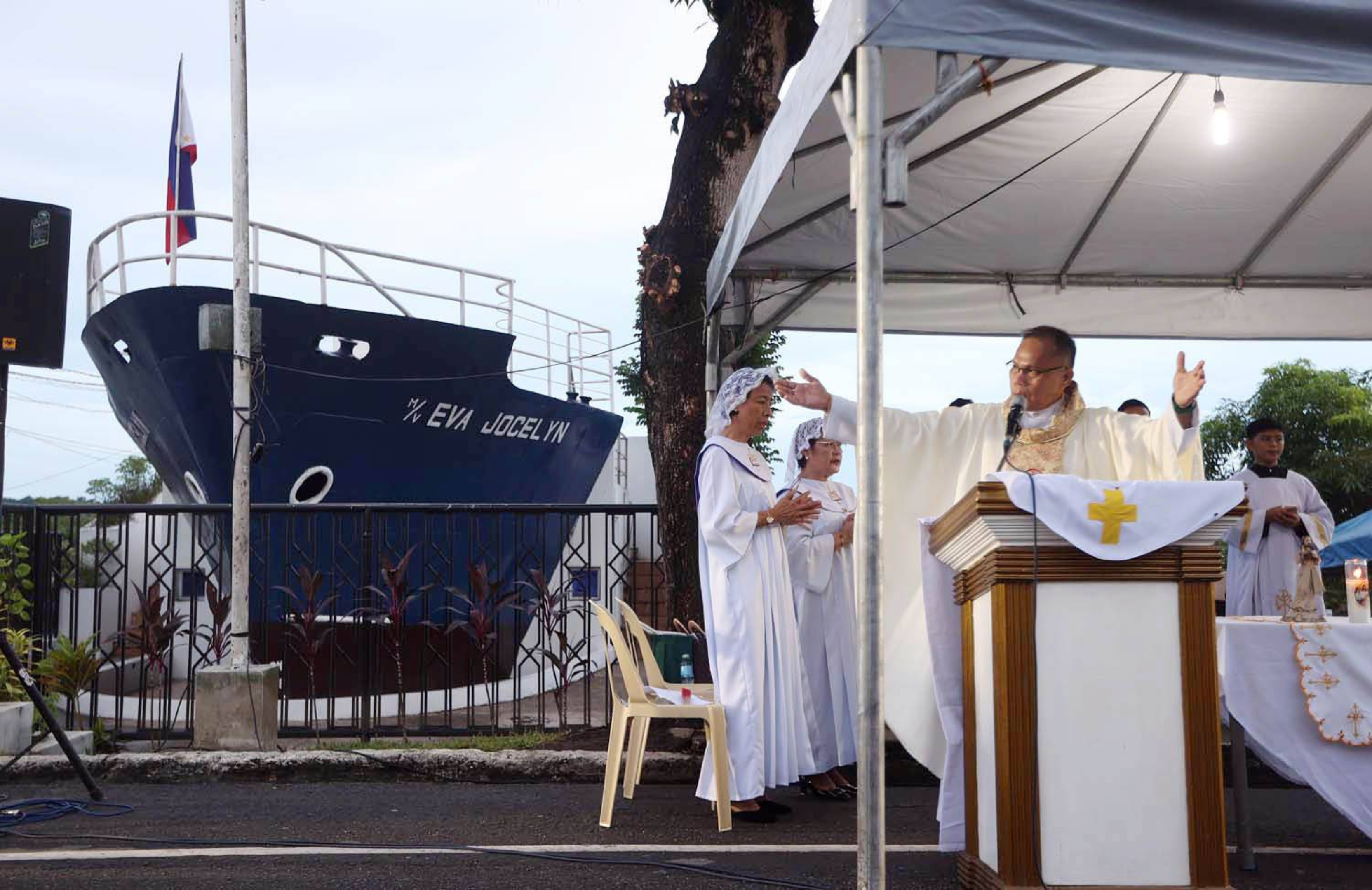
REMINDER A Holy Mass is celebrated at a memorial for victims of Superyphoon “Yolanda” (international name: Haiyan) in Barangay Anibong in Tacloban City on Nov. 7, 2023, as Eastern Visayas marked the 10th anniversary of the tragedy that devastated the region. —Niño Jesus Orbeta
TACLOBAN CITY, LEYTE, Philippines — President Ferdinand Marcos Jr. on Monday vowed that his administration would carry out more projects for the rehabilitation of areas battered by Supertyphoon “Yolanda” (international name: Haiyan) more than 10 years ago, lamenting that nothing had been done in all that time.
Speaking with reporters in Tacloban City, Marcos said the Eastern Visayas region had not fully recovered from the impact of the 2013 supertyphoon since rehabilitation-only started at the beginning of his two-year administration.
READ: Don’t waste lessons from Yolanda
“So, that’s still, all those rehabilitations, you know, we only really started two years ago. Because nothing was done in the previous administration, nothing was done in the administration before that,” he said.
The President was in Tacloban City, Yolanda’s “ground zero,” to inaugurate government projects, including farm-to-market roads meant for agrarian reform beneficiaries in that region.
He expressed optimism that the ongoing infrastructure projects by his administration would lead to the growth of the agriculture sector in Eastern Visayas, the region that bore the brunt of the supertyphoon.
‘Continuing plan’
Yolanda took the lives of more than 6,000 people, affecting the livelihood and welfare of millions, and causing estimated damage of P95.48 billion in crops, homes and infrastructure.
According to Marcos, the efforts of the two administrations that came before him had not resulted in the full recovery of areas devastated by the supertyphoon, including the road condition of Maharlika Highway in Samar province.
He said the national government would carry out the rehabilitation of Samar’s main highway as soon as funds are available.
“It’s part, it’s always part of the continuing plan for the rehabilitation of [Yolanda-hit areas] because even up to now, some of the governors—I was talking to them and some of the other officials—believe that we have not fully recovered from Yolanda,” the President said.
“So, how long, [about 11] years on, we are giving our full attention to this now,” he said.
“But the plan is there, the funding will be available, whenever the schedule requires it. So yes, that’s what we are doing,” Marcos said.
Failed targets
In November 2015, toward the end of his term, the administration of then President Benigno Aquino III admitted that the government had problems with land acquisition, among others, to help the victims of Yolanda.
One of the problems was that tracts of land initially identified by the government for the permanent housing of the victims had procurement issues.
The Aquino administration said at that time that the government had completed only 51 percent of the projects aimed at rehabilitating affected communities.
Then Economic Planning Secretary Arsenio Balisacan (who has since been reappointed to that position under the Marcos administration) said rehabilitation programs would continue until 2017.
In August 2017, then President Rodrigo Duterte created an interagency task force to monitor the government’s rehabilitation efforts.
In its 2020 audit report, the Commission on Audit said the National Housing Authority (NHA) had failed to meet its target of providing 218,975 housing units to Yolanda-displaced families. It found that only 139,516 housing units, or 64 percent of the target, were completed that year.
In June 2021, Duterte ordered the NHA to complete the Yolanda housing program within six months.
According to the NHA in the Eastern and Central Visayas regions, as of June 2021, around 52,165 of the 63,343 housing units for families who lost their homes had been constructed by that time.
In December of that year, the deadline imposed by Duterte, the NHA, said it would commit to getting its program done by June 2022—incidentally, his last month as president.
By February of that year, then Housing Secretary Eduardo del Rosario said a “reassessment” was conducted about the housing projects because the need for housing units had ballooned to 225,000 from the original 185,000—or an increase of 30,000 to 40,000.
“There were sites considered for the housing units that were purchased, which turned out to be areas unfavorable to the displaced [people] who will be relocated there,” Del Rosario said. —with a report from Inquirer Research